
In 2025, personalized marketing is the new normal—no longer a nice-to-have but a must-have. Search engines like google are constantly improving and so they focus more on providing user-focused content. As a result, personalization has become an essential element of SEO success. Building backlinks and targeting certain keywords won’t be enough anymore. Search engines today rank based on understanding context, intent and relevance — a foundation created by recent improvements to AI-powered tools (the equivalent of Google’s Bard, MUM and others).
This presents a unique opportunity to marketers. Tailored experiences that align to user’s needs not only helps to improve search engines rankings but also leads to increase in engagement and conversion. The ultimate takeaway here is evident: search engines reward the content that will most resonate with the user and personalization is the best way to do just that.
In this article, we will explore how personalizing marketing leads to SEO success, actionable strategies for implementing it and setting you up for the search of the future.
Table of Contents
1.) The Evolution Of SEO: From Keywords To Context And Intent
The traditional SEO was a more simple concept where an overall focus was given to keywords and backlinks. Marketers could optimize their sites through the use of keywords on the page and accumulating backlinks from other reputable sites. However, the situation has changed dramatically in recent years.
Currently, search engines such as Google are aiming more at the semantic meaning and purpose of a search query rather than the word itself. The use of semantic search and some of the most advanced AI applications like Google’s MUM (Multitask Unified Model) have changed the way the search engines analyze the content. They focus on aspects like user behavior, their search query, and even the context of the search result that they are to engage with.
This means that the search engines are not only searching for pages containing the keywords but rather they are searching for content that is relevant to what the users are seeking. Dwell time with the page, the click through rate and relevance of the content to the visitors are some of the characteristics of a quality web content. Moz writes that these engagement signs are now incorporated into the Google algorithm, which again proves the necessity of creating material that not only contains keywords but also meets the user’s expectations and needs.
2.) Why Personalized Marketing Is Critical For SEO Success:
Personalized marketing is a hero for SEO since it drives certain factors that an SEO cares about, such as user-interaction, conversion-rate, and relevancy of the content. Thus, the companies, which adopt personalization on their websites, observe increased sales by an average of 19 percent. That’s a clear indication that personalization is not an option but is a basic necessity for any business success.
Improved User Engagement:
The first outcome of using personalized marketing is high user engagement. If content targets certain interests and needs of users, then they are likely to remain on the website for a longer time. For instance, if a SaaS company demonstrates a blog content such as ‘improving team cooperation’ based on the user’s past web surfing, then the chances are the user will stick around. Such increased activity informs search engines of the usefulness of the page and leads to improved rankings.
Higher Conversion Rates:
Personalization has a strong effect on how people convert to buyers. When businesses create personalized product information and specific deals they help users find more suitable pathways through the experience. A personalized pop-up with free trials that matches the user’s business will create better results than general offers because it provides specific benefits. Research shows that custom offers generate better click-through results which produce more sales from customers.
Enhanced Content Relevance:
Apart from engagement and conversion, personalization is crucial in the sense that it helps in enhancing the content relevance. When you create content that fits the need and purpose of your audience, it increases the chances of your content to rank high. For instance, if a user types in the search bar “top project management tools for small teams,” they are going to interact with content that responds to that request. The more the content is relevant to the user’s search query, the higher the chances of the search engines to place the content higher.
SEO Impact:
In the long run, personalized marketing can be highly useful in the process of SEO since it helps to make content more relevant to the target audience and is consistent with search engine algorithms. This is because when content is targeted at specific audience segments, the search engines are in a better position to determine the importance and purpose of the content. For example, a SaaS business that provides project management software may display different content to small businesses and enterprise clients. It adds value to the user, and at the same time it informs the search engines what the content is all about, thereby enhancing ranking.

3.) Actionable Strategies To Implement Personalization:
So, let’s describe in detail how to implement personalized marketing, as we have clarified the reasons why it is needed.
Segment Audience Data For Content Creation:
The first step towards making your marketing efforts personal is to segment the audience. You cannot provide relevant content for your site’s visitors if you do not know them and what they are searching for. This is where user data comes in.
You can begin by segmenting users based on their behavior, which may be in terms of their search intent, their buying habits or level of activity, and so on.
Here are some ways to segment your audience:
- Search Intent: Understand how users think about their needs. Are they just researching information? Do they have the intention to buy now or are they still in the research stage? Users who are still researching will look for educational content while a person who is interested in buying would prefer product demonstrations as well as trial offers.
- Purchase History: If a user has previously made a purchase with you, then they can be offered a new product or a related product to the one they have previously bought.
- Engagement Level: How active is the user in terms of the time he spends on your site? If they went through several pages or stayed for a long time on your site’s page, then they can be targeted for more focused content that leads them further to the sales funnel.
Thus, when you segment your audience, it will be easier to come up with content that will be relevant to the various categories while at the same time enhancing your SEO. This is because Google prefers content that meets the user’s needs and this leads to better search engine ranking.
Dynamic Content And Landing Pages:
Landing page customization is among the most effective ways of increasing conversion rates. Dynamic content on the other hand is content that changes depending on the behavior, choices or previous actions of the visitor to the website.
For instance, suppose a visitor comes to your site and has earlier downloaded a file from your blog. Instead of the typical information that is displayed when one arrives at a landing page, you could give them a specific offer such as, “Since you have been interested in marketing automation, you may find this free trial of our platform useful.” This personal approach makes it more likely that they will engage in the desired behavior such as downloading more content, subscribing to a trial or making a purchase.
In order to effectively use dynamic content, it is recommended to focus on the following pages:
- Product Pages: A user who has expressed interest in a certain product can be presented with related products, suggestions, or special offers.
- Blog Pages: A user who often visits certain topics can be presented with more detailed articles or other materials associated with the topic.
Another factor that can positively affect performance is the use of personalized CTAs (Call to Actions). It is evident from the research that the first-person CTAs can boost the conversion rates by as much as 202%. Instead of the common button ‘Sign Up’, it is recommended to use more specific calls to action such as ‘Get Your Free Trial’ for a user who has some level of interest in your product.
Craft Content Based On Intent Categories:
Gaining insight into the user’s intent is crucial when creating content that will be relevant to them. Not all the people who visit your site have the same purpose of visiting it, and this should be understood. In general, there are three types of search intent that you should know when developing personalized content:
- Informational Intent: These users are seeking information. They could be in the process of looking for articles, blog posts or guides. An example of such user is one who is searching for the topic, “What are the benefits of SEO for SaaS?” You can develop blogs or educational content that addresses these particular questions. This is useful but also makes your site relevant for that particular topic and people are likely to come looking for more information on that topic from your site.
- Navigational Intent: These users are looking for a specific product, service or brand. For instance, a user who types in “Best project management software for remote teams” is in the search of specific solutions. This is where the comparison pages or additional product descriptions are relevant. They assist users to get exactly what they want and at the same time introduce your product to them as a solution to their problem.
- Transactional Intent: These users are in the decision-making stage and are willing to buy a product or seek a particular service. For instance, a user searching for “Buy project management software” is in a transactional mode. At this stage, it is appropriate to use personalized call to actions, product offers, and trial sign-ups.
Knowing the intent of the users, you can create content that addresses the needs of the users at the right stage of the buyer journey. This is important for enhancing the usability and the search engine rankings of the site.
4.) Web Personalization Tools For Content Optimization:
Technology is changing the direction of involving customers more towards personalization in some way. Instead of segmenting web users manually, and even without proper information about the user, you can use advanced web personalization tools to segment your users’ behavior and provide them with even more relevant content.
Personalization tools can monitor user engagement and adjust the content immediately. For example, if a visitor constantly explores a certain range of goods or services, through the help of AI, it can deduce the subject’s interest and show more options or information.
These tools also contribute in developing the idea of the future personalized advertising. Consider the case where you are managing an online business that sells products online. For instance, the tool can guess which out of the two a user is likely to make the next purchase, even if he has not bought anything at all. It can then present the client with relevant products, advertisements or promotions to be made. Based on their past browsing behaviour or present browsing activity.
Using web personalization tools in your personalization efforts can help you:
- Recommend what kind of content or products users will possibly engage with.
- Change content on the fly based on visitor behavior.
- Optimize a customer experience so that it is both natural and suited to the specific user.
Conclusion:
By 2025, it will not be an option to have a personalized marketing strategy; it will be mandatory for search engine optimization. The recent advancements in the search engine technology and other algorithms such as Google’s Bard and MUM means that the focus on the users and their experience will be crucial in enhancing the ranking factors as well as the user experience. This change will not only benefit the marketer in terms of SEO but will also help them build better relationships with their audience.
The future is for marketers who know their customers and adjust every communication. Thus, by focusing on personalization, marketers can increase the level of engagement, conversion rates and achieve significant improvements in the SEO ranking.

 About the Author:
About the Author:






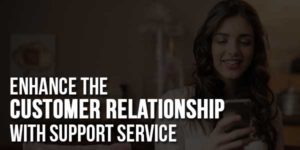

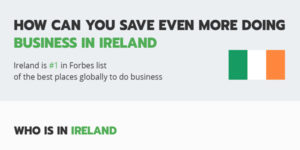



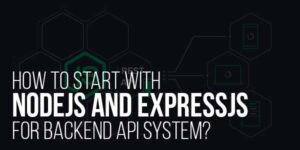

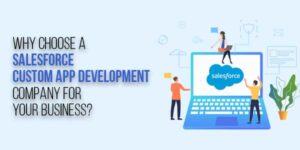
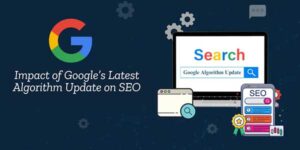
Great post, I really enjoyed the insights you shared. The tips are practical and easy to implement. Looking forward to reading more of your content. Keep up the great work.
Welcome here and thanks for reading our article and sharing your view. This will be very helpful to us to let us motivate to provide you with more awesome and valuable content from a different mind. Thanks again.
Hi,
This blog is an excellent resource filled with valuable insights and practical knowledge. Its breakdown of complex concepts into simple, actionable points makes it incredibly helpful for readers at any level.
Thank you for sharing such an informative piece! Looking forward to reading more blogs like this and gaining even deeper insights into the topic.
We can also provide online training on Okta Course
Welcome here and thanks for reading our article and sharing your view. This will be very helpful to us to let us motivate to provide you with more awesome and valuable content from a different mind. Thanks again.
Personalized marketing is revolutionizing SEO in 2025! Tailoring content to user intent and behavior boosts engagement, improves rankings, and drives organic traffic. Businesses that leverage AI-driven personalization will stay ahead in the competitive digital landscape.
Want to build a successful career in the energy sector? Join the best Oil & Gas course in Kerala at MTTC International LLC. As the best Oil & Gas training institute in Kerala, we provide expert-led training, hands-on experience, and 100% placement assistance. Take the next step toward a thriving career today!
Welcome here and thanks for reading our article and sharing your view. This will be very helpful to us to let us motivate to provide you with more awesome and valuable content from a different mind. Thanks again.
This was an insightful and well-structured article! I truly appreciate the depth of information on how personalized marketing is shaping SEO in 2025. The breakdown of strategies and tools provides great value for marketers looking to stay ahead. Kudos to the author for such a well-researched and engaging piece!
Welcome here and thanks for reading our article and sharing your view. This will be very helpful to us to let us motivate to provide you with more awesome and valuable content from a different mind. Thanks again.
Thanks for sharing this post! I read it and found it very useful and insightful for my business.
Welcome here and thanks for reading our article and sharing your view. This will be very helpful to us to let us motivate to provide you with more awesome and valuable content from a different mind. Thanks again.